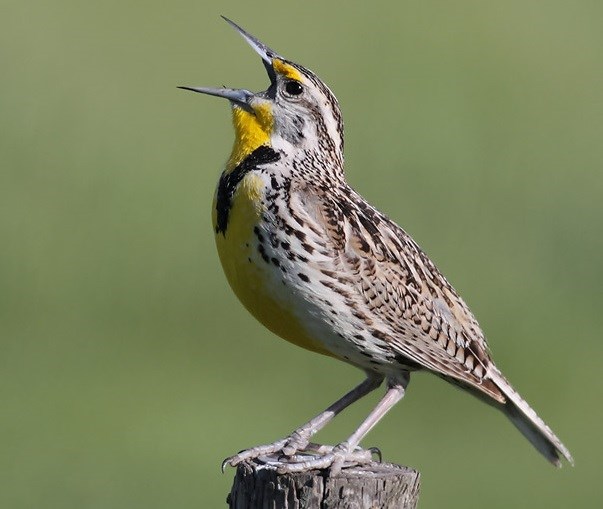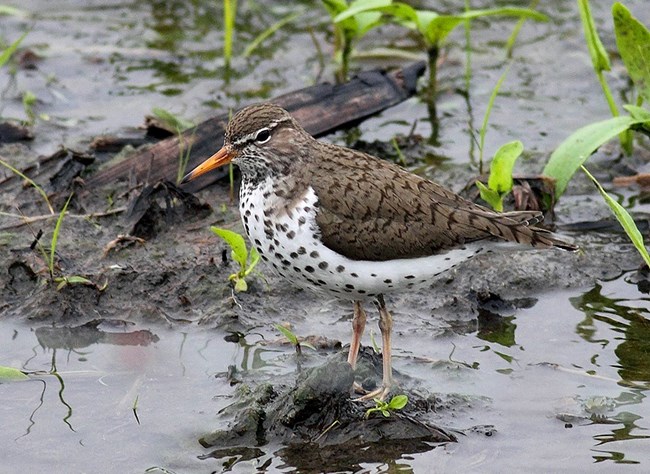Last updated: October 24, 2018
Article
Landbird Monitoring at Agate Fossil Beds National Monument

Photographer: Terry Sohl
Overview
Agate Fossil Beds National Monument consists of 3,000 acres of mixed grass prairie and a broad floodplain of the Niobrara River that has created a riparian area for water-loving plants and wetland birds.
The Northern Great Plains Inventory and Monitoring Network developed a bird monitoring protocol jointly with Bird Conservancy of the Rockies (formerly the Rocky Mountain Bird Observatory). The basic sampling unit is a 1 square km grid that contains 16 evenly-spaced sample points, separated by 250 m. Observers stand at pre-determined fixed points and record birds observed or heard over a 6-minute period. After completing the survey, observers navigate to the next point using GPS units.
Landbird surveys have been conducted at Agate Fossil Beds National Monument since the 2013 breeding season. This research is the beginning of a long-term effort to monitor species trends and densities. In 2016, a total of 2,316 birds representing 64 species were recorded during surveys.

NPS
Monitoring Highlights (2016)
- Nearly one fourth of all birds observed or heard were red-winged blackbirds.
- Other common species included the western meadowlark (21% of detections), common yellowthroat (6%), mourning dove (6%), brown-headed cowbird (4%), and ring-neck pheasant (4%).
- Species detected for the first time since sampling began included the burrowing owl, willow flycatcher, yellow-breasted chat, and spotted sandpiper.

© Terry Sohl
Interesting Fact
The spotted sandpiper is the most common sandpiper in North America. It has a unique social life in which the male takes the active role in rearing the young. The male will incubate the eggs and take care of the young, while the female is the fierce defender of its territory. Female spotted sandpipers will occasionally mate with up to 4 males and each will care for their clutch of eggs.
For More Information
Protocol Contact, Northern Great Plains Inventory and Monitoring Network
Angela JardingLinks
Rocky Mountain Avian Data Center
Summary by Angela Jarding March 2017
View the list of birds detected at this park by downloading the 2016 PDF from the NPS Data Store
